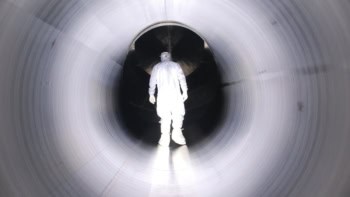Just when it seemed safe to come out of our nuclear bunkers - the cold war was over and the five nuclear powers had stopped nuclear tests - India and Pakistan have reminded us that nuclear weapons still play a large role on the world stage. Although uncertainty persists about the number and size of the explosions carried out by both countries, there can be no doubt about the destructive potential of the latest additions to the weapons stockpiles in southern Asia. India and Pakistan have already fought two wars over Kashmir: the next one could be the last.
Some 200 Indian scientists have been brave enough to defy the widespread approval and enthusiasm for the tests inside the country by expressing their “deep dismay and unhappiness at this action of the Indian government” in a statement available on the Web. In the statement the scientists caution that “the scientific and technological achievement in conducting these nuclear tests should not be blown out of proportion…We do not see what immediate threats to national security ‘forced’ this move, particularly when people’s needs in terms of education, health, infrastructure and industrial development are urgent.”
Meanwhile the Doomsday Clock – the metaphorical “symbol of nuclear peril” maintained by The Bulletin of the Atomic Scientists – has been moved five minutes forward and now stands at nine minutes to midnight. The closest the clock has ever been to midnight was two minutes, when Russia exploded its first thermonuclear device in 1953.
The tests also highlight how difficult it will be to verify the Comprehensive Test Ban Treaty (CTBT), if it ever comes into force. For this to happen the treaty has to be ratified by the 44 nations that have nuclear power reactors. So far only 13 have ratified the treaty, and India and Pakistan have yet to sign, let alone ratify it. Of the five established nuclear powers – China, France, Russia, the UK and the US – only France and the UK have ratified the treaty.
Preparations for verification are already under way and an International Monitoring System (IMS) capable of detecting nuclear explosions as small as 1 kiloton is being set up. However, there is currently a grey area between 1 and 10 kilotons in which detection is difficult against a background of earthquakes, volcanic eruptions and conventional explosions such as mining blasts. India claims that its five tests had yields in the range 0.2 to 43 kilotons, but only the largest was detected: the bomb dropped on Hiroshima had a yield of 15 kilotons.
The IMS will rely on a worldwide network of four types of sensor: seismic, hydroacoustic, infrasound and radionuclide. Last year a US National Research Council report listed a series of research activities that were needed in all four areas if the IMS was to meet its specification. These included research on theory, modelling, sensor design, background signals and the fusion of data from the different types of sensor.
Ultimately, however, the tests remind us that despite much discussion of other threats to our planet and daily lives – global warming, disease, cyber-terrorism and biological warfare for instance – there are still large arsenals of nuclear warheads dotted around the globe, and very little enthusiasm among the owners of these missiles to get rid of them. And while these weapons remain, no amount of treaties will guarantee that they will never be used.
The world would be a better place if the CTBT were in place, but that still would not stop the US, for example, from spending $5bn per year on a stockpile stewardship programme to ensure that its warheads explode when they are meant to (see Physics World page 39). And for as long as the five established nuclear powers hang on to their weapons, their exhortations to other nations to abandon their nuclear aspirations will ring hollow.



